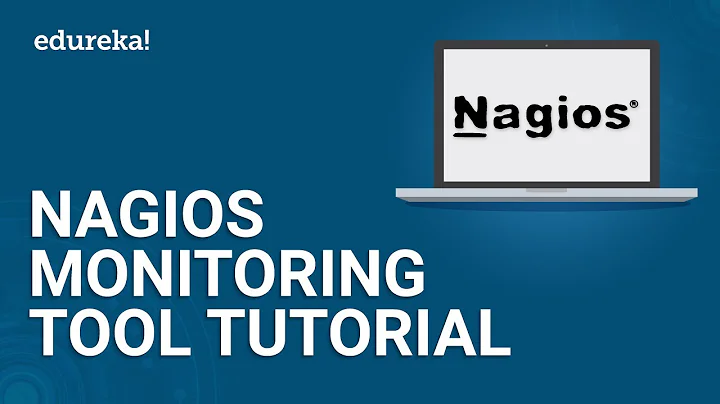Key differences between Nagios and Open NMS?
Solution 1
Wikipedia has a comparative table which helps a lot
I think the key differences are:
language: Nagios is written in C and OpenNMS in Java. It makes nagios a lot faster on older hardware.
Data collection: Nagios performs very little data collection. Other software (like cacti for example) will be required for a more extensive data collection system. OpenNMS includes it out of the box.
host and service discovery: Nagios has to be told what to monitor whereas OpenNMS has discovery features.
Solution 2
I would suggest you also consider Zenoss Core, the free version of Zenoss. I have installed it to monitor our network and servers, and have found it to be very capable and much more userfriendly than Nagios. It does what Nagios and cacti do, but integrated. Most functionality you'll need is likely there, but if not you can extend it with Zenoss packs and Nagios plugins.
You can literally have it installed and working in 30 mins, so it's easy to evaluate it. Seriously, we're very happy with it and it sounds perfect for your requirements.
Solution 3
OpenNMS targets at the enterprise-sized organization which needs a scalable network management solution. Nagios is better suited to monitor a limited amount of servers which you can afford to set up manually. If you compare it to the transportation network, Nagios is a truck and OpenNMS is a railroad system - both do "roughly" the same ("monitor things", "transport things") but are aimed at different markets.
Solution 4
There's a FreeBSD port (see https://www.geeklan.co.uk/?p=132) that works with the Diablo JVM.
Solution 5
I would recommend you http://omdistro.org/. It is a precompiled and pre-configured version of Nagios with a lot of plugins to make management, configuration and visualization pretty easy, using mainly Check_MK extension. The main advantage is to have Nagios working in Passive Mode, meaning the checks will be performed locally (by each server) and only the status will be sent to Nagios. For mid-large installations it is a huge improvement. Worth to mention that it support multi-site deployment, so if you have remote sites, you
Related videos on Youtube
Comments
-
Chance almost 2 years
I am looking to pitch a comprehensive monitoring system to my manager, and have been considering OpenNMS. However, I have seen glowing praise of Nagios on here and I was hoping someone with experience could help illustrate the key differences for me. Do their focuses differ, or are they just competitors?
If some background helps, we run 6 on-site servers (File server, PBX, proxy, application, etc.) and two off-site servers (Website / development) along with a couple of switches and a router. The monitoring service we install will be running on a separate converted desktop running freeBSD. All of our stuff runs either Linux or a BSD derivative.
We are looking to spend no money to implement this (sigh).
Thanks for any help.
EDIT It looks like openNMS offers a more comprehensive solution closer to what I want. However, because it is written in Java and the port is not in the official ports tree yet, it has been vetoed. Now begins my Nagios would be better than just MRTG campaign. Thanks for the fast responses.
-Chance
-
Karl Katzke about 15 yearsTo be pedantic, Nagios does data collection for things like uptimes, it just doesn't persist the specific performance data passed back from the client nor does it output performance data. There are options to persist this data inside a Round Robin Database (RRD) in the Nagios configuration, and then Cacti (or just plain ol' RRDTool) can be used to output the data.
-
Karl Katzke almost 15 yearsI found Zenoss to be exactly the opposite: I got it installed and working in 30 minutes, but couldn't get it to do anything.
-
Atulmaharaj almost 15 yearsSorry to hear that, Karl. Our experience was very pleasant. Like any monitoring solution there is a learning curve, and it takes time to tweak the details and thresholds, but the setup was what won me over. We installed it, let it scan our subnet, deleted all client hosts and assigned the server hosts to the correct device classes. Have you checked the Administration Guide? zenoss.com/community/docs
-
Atulmaharaj almost 15 yearsWhy are people downvoting my answer? This is a Q&A site, and I think it's perfectly valid to inform the asker of alternative options that they may not be aware of, as long as they're relevant and might solve their problem.
-
 warren almost 15 years@Martijn - my guess is because the question wasn't looking for additional alternatives, plus the Zenoss line, while having the "Core" edition, very much pushes towards the commercial editions, whereas OpenNMS and Nagios "happen" to have commercial support, but everything is available in the "community" editions, too.
warren almost 15 years@Martijn - my guess is because the question wasn't looking for additional alternatives, plus the Zenoss line, while having the "Core" edition, very much pushes towards the commercial editions, whereas OpenNMS and Nagios "happen" to have commercial support, but everything is available in the "community" editions, too. -
Antoine Benkemoun almost 15 yearsZenoss is awesome. It's web interface is really simple to use and makes Nagios look like some old dinosaur...
-
J. M. Becker about 11 yearsI'm practically a 'C' performance zealot, and definitely would deduct points from any project written in Java, The performance impact generally boils down to choice of plugins. Reflecting my experience, Nagios itself performs very fast, and I absolutely believe that being written in 'C' is largely responsible, the slew of perl/python/php plugins/components/addons practically chokes a server to death. The official plugins, written in 'C', are absolutely great. Unfortunately for some things, more than you would expect, perl is a necessity. multiply that times 1000, and ...




